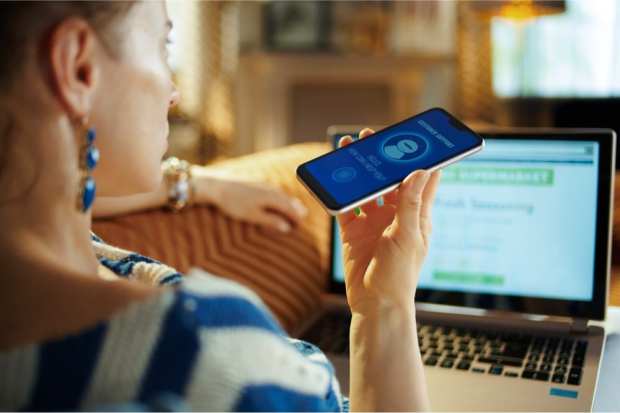The Digital Shift Will Be Verbalized

Given that nearly half of U.S. consumers (48 percent) moved the majority of their shopping online during the pandemic — and seeing as how many will stick to digital, avoiding physical retail altogether — it’s now urgently incumbent upon merchants to shift accordingly.
PYMNTS’ October edition of The Digital Shift: Consumer Trust Playbook, an Amazon Pay collaboration, makes the point that “Consumers today are preferring to shop with merchants they know and trust, making it paramount for retailers to build an eCommerce presence that can earn and retain customers’ confidence. This means merchants must first provide the visual and social cues that 20 percent of consumers say are important to gaining their trust when shopping with new eTailers, such as supporting well-known payment brands and digital wallets and having a well-designed, user-friendly interface.”
And while the COVID-era hit parade is led by touchless payments at present, the immediate future is decidedly hands-free when it comes to dawning consumer preferences.
The Digital Shift: Consumer Trust Playbook notes that “… one method is particularly appealing: voice-enabled payments. Consumers who have migrated to digital channels to make purchases are exhibiting a strong interest in using voice assistants in the transactions they make on a daily basis, such as purchasing lunch, hailing rides and ordering groceries and many more would like to use them to track their digital purchases.”
That equals unmet demand, and that’s opportunity by another name. And it’s more.
“Growing evidence shows that Main Street businesses, including restaurants and grocers, must either take the digital leap or risk losing business,” per the Consumer Trust Playbook.
Digital Is A ‘No Regrets’ Strategy
The ability to quickly adapt to consumers’ increased demands for digital and contactless purchasing demonstrates how businesses can maintain customer loyalty and trust despite a changing economy, the new Playbook states. But the digital shift is not the end of stores.
“I think the question sometimes is posed about online versus physical almost in opposition, and I disagree with that opposition. The situation we see now is certainly customers exploring, maybe for a wider range of retailers, the possibility of using digital tools. And by that, I don’t just mean for shopping online, but using tools, for instance, such as Alexa®. I see this as a great opportunity for retailers,” Patrick Gauthier, vice president, Amazon Pay, told PYMNTS.
However, Gauthier added, “Going digital is what we at Amazon® would call a ‘no regrets’ strategy. Whether you believe people are going to come back rapidly in-store or … remain in the safety of their homes, going digital either way is going to improve the experience of the customer. I think the opportunity here is to actually tap into that interest and tap into the new shopping journeys, and you see some of that happening.”
Don’t Forget The Humans
As much as we’re rooting for physical retail to reclaim its former status, that may not happen. The future of malls alone throws much of physical retail’s future into question.
Meantime, there are digital options and voice assistants to bridge the gap. They had just better do some with some humanity if they have a designs on post-pandemic digital success.
“Without the in-person interaction of physical retail, consumers will trust businesses that bring humanity into the digital shopping experience. Customers may want to buy your product, but what they really want is to connect with you and your purpose. I think in this environment, human beings are craving connection more than ever before,” Kelly Wenzel, chief marketing officer at Amazon Pay, told PYMNTS. “Brands that lead with purpose, clearly communicating why they exist and how they are contributing to the community will resonate with consumers.”
Which makes “first contact” so important. Just watch any film about interplanetary relations.
As Amazon Pay Head of Product Kris Zanuldin said, “You have to help them get over that first experience, that first transaction or just that first voice interaction, and when they’re delighted by the outcome, you’ll start to see them open up a lot more in terms of adoption.”
